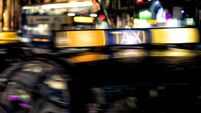Only five passenger locator forms used for contact tracing since August

Cork Airport terminal building public entrance/exit. Picture: Larry Cummins
Irish contact tracers working to track close contacts of confirmed cases of Covid-19 from flights coming into Ireland have accessed Passenger Locator Forms (PLFs) on just five occasions since August, according to the Department of Health.
In that time roughly 500,000 of the mandatory forms for passengers inbound on planes and ferries had been filled out, meaning that the data contained on the locator forms was used for contact tracing in just 0.001% of cases.
The Department of Health had previously advised that HSE contact tracing teams were in a position to access the information on PLFs, a statement which ran contrary to the experience of tracers in Ireland’s four large contact tracing centres.
Sources within those centres had said that the data they used to contact passengers comes from flight manifests, is often delayed in its arrival, and is often inadequate for tracers’ needs.
While staff had been told within the past week that they would be given access to the data contained on the PLFs, that has yet to happen.
Passenger locator forms were first brought into use by the State in March as a means of ensuring that inbound passengers were self-isolating. The data contained on the forms is comprehensive, comprising name, address of stay, contact number, email, age, flight number, country of departure, length of stay, and departure date.
It is an offence, punishable by a fine of up to €2,500, either to fail to fill in a form or to fill it out with misleading information.
The HSE is the controller of the locator form database, a spokesperson for the Department of Health said, while “contact tracing teams can access data on request”.
According to sources, many close contacts of confirmed cases on incoming flights are not being phoned until up to 10 days after their flight arrives.
As of November 29, Ireland moved to the EU’s traffic light system, meaning that many incoming passengers are not required to self-isolate at all, while the expected spike in passengers travelling home for Christmas has raised fears the tracing system could become overwhelmed, as was the case in early October as the second wave of the virus took hold.
One tracing source said they had advised friends and family not to travel home for Christmas, and that if they were to do so they should isolate for 14 days upon arrival, regardless of whether or not they had tested negative prior to flying.
“People need to know that flying isn’t risk-free,” said another.
“The passenger locator forms won’t help us find you in a timely manner because if someone has them they are at least three degrees of separation away from the actual contact tracer working on your file,” they added.











